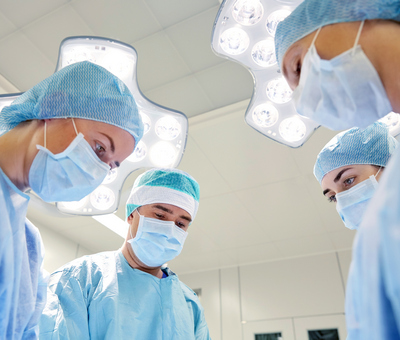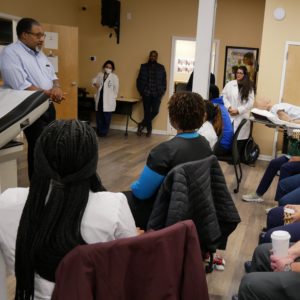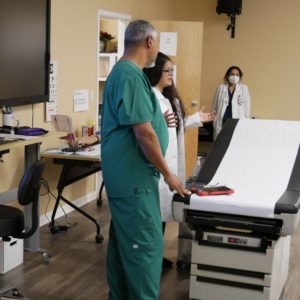Local approach to universal healing
AUIS professor uses microdialysis technique in understanding the Central Nervous System
As medical advances continues to leap forward, innovative techniques once considered untested or untried become interesting approaches to healing. One professor at the American University of Integrative Science, School of Medicine shows progress in the realm of microdialysis through thought provoking study and research.
Since 1992, Professor of Physiology and Pharmacology, Dr. Ahmmed Ally has been conducting research using the microdialysis technique related to understanding and treating disorders of the Central Nervous System.
According to Dr. Ally, microdialysis is a state of the art technique used by physicians to deliver drugs into a particular tissue or organ.
“It allows physicians to collect samples from tissues or organs,” said Ally. “Microdialysis also measures different molecules or chemicals like sodium, potassium, hormones and neurotransmitters in order to diagnose, or treat any altered state or disease.”
Developed more than 30 years ago, the microdialysis technique was used to obtain information on the extracellular fluid in the brain. The technique was mostly focused on the functioning of neurotransmitters. In microdialysis, a semi-permeable membrane allows dialysate fluid to be collected and analyzed.
Through his research, Dr. Ally has utilized microdialysis to administer drugs directly to affected areas of the brain in cases of stroke and has noted remarkable results.
“Because I am a neuroscientist, this technique allows me to measure and understand the changes of neurochemicals happening within a localized area,” said Ally.
Prior to the discovery of this innovative technique, patients were treated with oral medications, or through intramuscular or intravenous injections. Those techniques required the medicine to have effects and sometimes unwanted side effects throughout the body.
“With this microdialysis method, now we can administer drugs locally, for example we can use this technique to treat a small tumor,” he said. “My research goals will explain regulatory mechanisms within the ventrolateral medulla involved in the integration of cardiovascular activity. I want to determine whether this integration is altered, or can be modified in a disease state, i.e., ischemic brain injury or stroke.”
Dr. Ally said that the primary purpose of his research is to explore the pathological and neurochemical changes happening during stroke in a small but critical area of the brain.
“The questions being asked in my research are highly relevant to provide a better understanding of the physiological, molecular and biochemical mechanisms involved in the interaction of the cardiovascular and musculoskeletal systems with exercise during stroke and heart failure,” said Ally. “One can reasonably understand that identification of the central neural mechanisms that control the cardiovascular responses during exercise will make a major contribution to our understanding of the regulation of these systems.”
Currently, the Food and Drug Administration has approved microdialysis for a number of clinical applications which include diseases that involve gastrointestinal, liver, resting skeletal muscle, adipose and brain tissue.
For more details on Dr. Ally’s research on microdialysis, visit AUIS.edu or http://www.fasebj.org/gca?allch=&submit=Go&gca=fasebj%3B29%2F1_Supplement%2F984.1&gca=fasebj%3B27%2F1_Supplement%2F1118.7&gca=fasebj%3B26%2F1_Supplement%2F1091.8&gca=fasebj%3B25%2F1_Supplement%2F846.7



